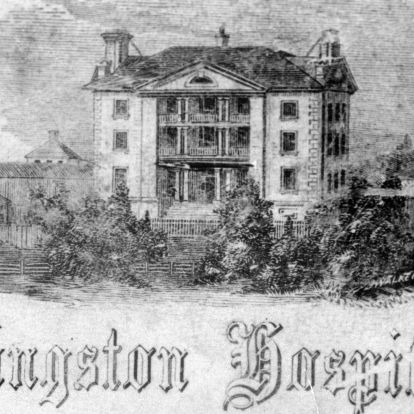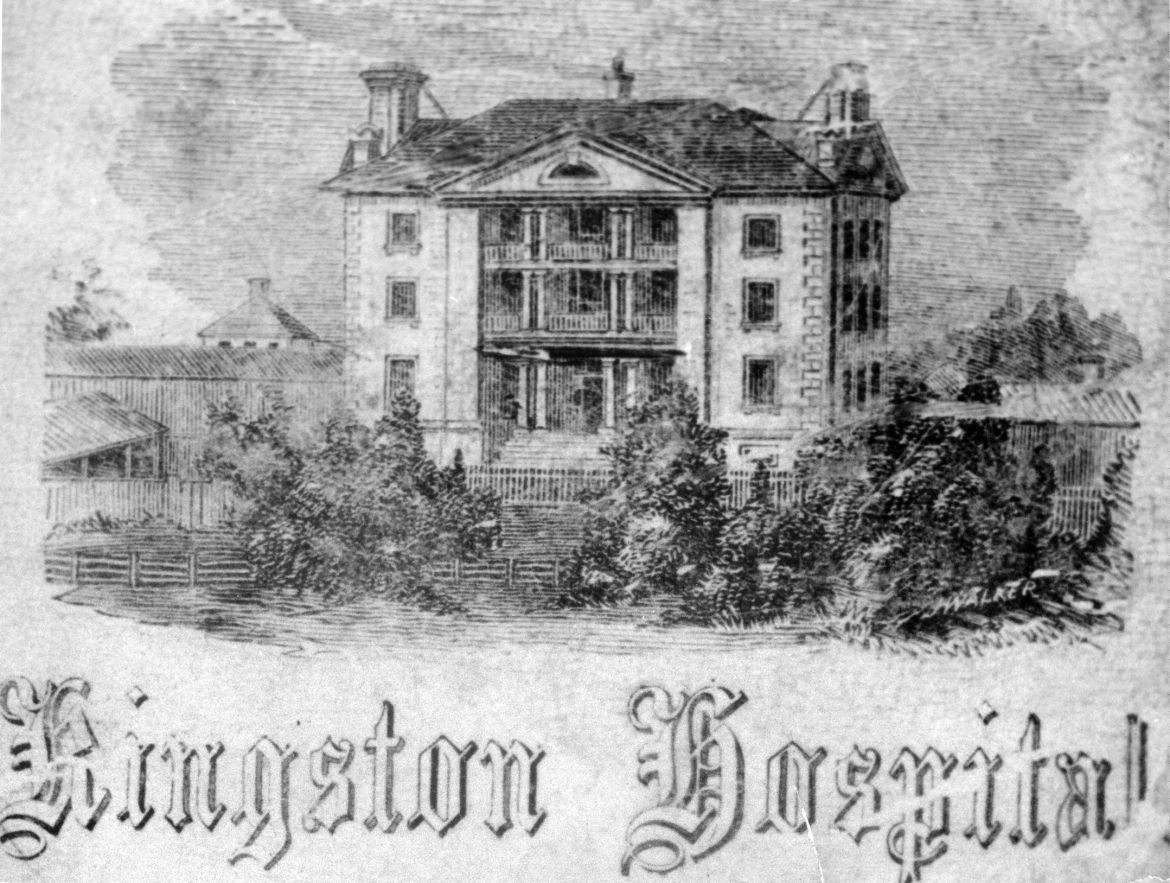Effective immediately masking is required for everyone when present on all inpatient units, in the Emergency Department (ED), the Urgent Care Centre (UCC), and the Children’s Outpatient Centre (COPC).
The Main
In 1835, the original building was completed and became known as the Main. Designed by architect Thomas Rogers, the hospital building was a three-storey limestone Neoclassical building, located on six acres of land just outside of town. The front and rear facades of the building were identical, with large windows and balconies. While bearing great similarity to many residences of the time, a fact historian James De Jonge argues is representative of the idea that the home was the “preferred location for the care of the sick,” the design of the building also promoted the movement of air. A common idea in the early nineteenth century was that disease was caused by bad air, or miasmas, so air circulation was critical to the prevention of disease.
Built to accommodate 72 patients the hospital unfortunately remained unoccupied as funds had run out before the interior of the building could be finished, and no money was available to operate the facility. The building sat unused until it was called into action as a military barracks and hospital during the Rebellions of 1837-38.


The view of the Kingston Hospital from the lake in the 1850's
